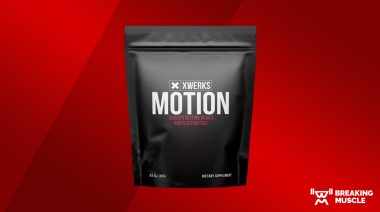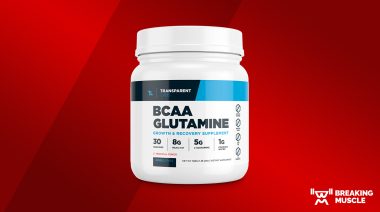Workout logging sites come and go. In my case, they mostly go. Either the logging wants you to follow a “GET RIPPED” tabloid routine, or the logging does nothing but, well, log my workout. Software should be smarter than pen and paper, and simply being searchable doesn’t qualify as a very smart database.
So when the fitness and health analytics site Science Behind Sweat entered my radar, I wanted to look under the hood of the Durham, North Carolina startup RxAnalytics. Founder and CEO Deepak Gopalakrishna let me do just that.
The Scientists Behind the Science Behind Sweat
If you think the site is being run by opportunist with some coding experience, consider this: Deepak has a masters degree in biology, a doctorate in genetics and molecular biology, and has founded previous companies specializing in making chemotherapies safer, as well as understanding the etiology of schizophrenia. The site’s chief data scientist, Dan Samarov has a PhD in statistics.
Yep, I had to look up etiology, too.
If book smarts aren’t your cup of tea, both Deepak and Dan have been CrossFitting since 2005 and both competed in the 2010 Crossfit Games. Don’t worry, their gym cred checks out.
Deepak explained their inspiration for the analytics startup:
What drives my fitness and my performance is very different from what drives yours. Even though my partner Dan and I would do the same WOD [workout of the day], our responses were different , and we wanted to figure out why. So, being the science nerds that we are, we decided to build something that would answer this question for us.
Logging Workouts
So the two began building the site about a year and a half ago using traditional databasing techniques, as well as a whole lot of machine learning algorithms. Deepak explained that workout analysis works a lot like Netflix. On the movie streaming site a predictive analytics engine looks at what you’ve watched and what you’ve favorited in order to make smarter movie recommendations in the future. Said Deepak:
We can predict how you should perform on a workout, and if you don’t achieve that level of performance, or you deviant from that level of performance we can figure out why.
They do this by breaking complex movements down into muscle groups. If you were to break down a squat, you’re primarily targeting quadriceps. But you’re also getting assistance from the gluteus maximus, adductor magnus, soleus, and being stabilized by countless other muscles. If you log a few movements that also happen to include the adductor magnus, and you happen to be underperforming in workouts using said muscle, Science Behind Sweat will hone in on the now obvious deficiency and recommend you watch Breaking Bad season one on Netflix. You might also want to look into that adductor.
 When it pinpoints inefficiencies, it shows you videos that improve pinpointed muscle groups or movements. Said Deepak, “One workout entered does more than just keep track of how many front squats you did, it has now populated a variety of metrics, and we can compare workouts you did yesterday to today, even though they’re not the same workout.”
When it pinpoints inefficiencies, it shows you videos that improve pinpointed muscle groups or movements. Said Deepak, “One workout entered does more than just keep track of how many front squats you did, it has now populated a variety of metrics, and we can compare workouts you did yesterday to today, even though they’re not the same workout.”
Traditional workout logging compares your current workout time to the same workout time in the past. This may tell you whether or not you got better, but it won’t tell you why, and worse yet, it won’t answer why your time may have decreased. According to Deepak, “We take it a step further. We say, hey, this is why you’ve changed, and now you’ve learned from it and can incorporate behaviors in the future, in order to have positive outcomes.”
Who Benefits from Science Behind Sweat?
Deepak sees many parallels to his previous career in the health care system. Doctors are trained professionals who can make phenomenal educated guesses based on symptoms and tests. Experienced coaches can do the same kind of on the spot performance analysis, sourcing from their training and years of experience. But the breakdown occurs when the doctor or the trainer has to keep track of 100 people. That’s a whole lot of data to parse on your own.
Science Behind Sweat allows affiliates managers to create a gym account so they can enter that day’s workout. Members can then login with their own accounts and simply enter workout times. Coaches can then clearly see who’s responding to their programming, or more importantly, who isn’t responding. Coaches can even create groups based on member’s work capacity, muscle group deficiencies, age, height, and weight.
So does Science Behind Sweat only work if your affiliate as a whole signs up? Not necessarily.
There’s a push to get affiliates involved in order to get trained coaches to look at this data with the athlete, but that’s not to say that individual athletes can’t analyze the data themselves. CrossFitters are smart people. They’re adept enough to do self analysis and self measurement. As in-depth as the data can be, it’s simple enough for anyone to understand. The parallels to the health care system ring true again. How many times have you self diagnosed yourself before heading out to see your short attention span doctor?
The Future of Science Behind Sweat
RxAnalytics has polled it’s current user base and asked how they could improve the site. They’ve since added a larger movement database, and an improved user dashboard that clearly tells you whether you are “winning or losing.”
 They also plan on setting up a Google circles-style grouping functionality where you can compare yourself to your own curated groups whether they’re elite athletes, affiliate members, friends, or enemies. Affiliates can see how they’re doing against other affiliates, all though anonymized information. You can even opt into private workout posts in order to keep other affiliate from aping your program.
They also plan on setting up a Google circles-style grouping functionality where you can compare yourself to your own curated groups whether they’re elite athletes, affiliate members, friends, or enemies. Affiliates can see how they’re doing against other affiliates, all though anonymized information. You can even opt into private workout posts in order to keep other affiliate from aping your program.
OK, strap yourself in because this is the exciting part for you gadget geeks: Deepak tell me that the company is working on incorporating a biometric sensor into it’s data collection:
I’ve been testing a prototype for three months now. They’re earbuds connected to a bluetooth device which you can clip onto your collar. It’ll measure heat rate, body temperature, distance, and speed. It’ll even tell you if you’re doing a full squat or a half squat based on accelerometer data…One of the key components of fitness is, how steady can you keep your heart rate while you’re doing high level activity. If you can keep a low heart rate while crushing a two minute and thirty second Fran, then you’re probably pretty fit. We can measure you heart rate in real time to see what movement have the biggest effect on your heart rate, and body temperature.
Deepak sees this biosensor as an important component in rounding out self analysis. It become the third layer of understanding an individual’s performance:
- Layer One: How you eat, how you sleep, and how you feel on a daily basis
- Layer Two: How you’re performing in your workouts over time.
- Layer Three: The physiological data provided by the biosensor (Heartrate, body temperature, V02 max, etc.)
A fourth layer of long term heath care data would eventually factor in. That is, as soon as the health care systems get their technology poop in a scoop. They anticipate introducing the device in about six months assuming continued testing and manufacturing go as planned.
Android and iOS apps are in the works allowing you to log your workouts at the gym as soon as you’re done.
What Does it Cost?
Starting next week, the basic site membership which including workout analytics will run $20 a year. A beefed up analytics package which will dig deeper into your data and return insights and more complex analytics will run you $10 a month, or $100 a year.
When the biometric devices are ready to go, a third tier will be be available that includes the hardware for free. Deepak and crew are also working on affiliate level products, as well. You can keep up with all Science Behind Sweat development on their blog.
Sign up for Science Behind Sweat at https://sciencebehindsweat.wordpress.com/
You can view Breaking Bad on Netflix, but it still hasn’t improved my squats. Don’t worry, I’m submitting a bug report today.






